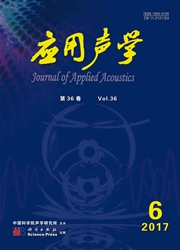

 中文摘要:
中文摘要:
微泡对高强度聚焦超声(HIFU)治疗焦域具有增效作用,而HIFU治疗中不同声学条件下微泡对HIFU形成声压场的影响尚不清楚。本文基于气液混合声波传播方程、Keller气泡运动方程、时域有限差分(FDTD)法和龙格-库塔(RK)法数值仿真研究输入声压、激励频率、气泡初始空隙率和气泡初始半径对HIFU形成声压场的影响。研究结果表明,随着输入声压的增大,焦点处声压升高但焦点处最大声压与输入声压的比值减小,焦点位置几乎不变;随着激励频率和气泡初始半径的增大,焦点处声压升高且焦点位置向远离换能器方向移动;随着气泡初始空隙率的增大,焦点处声压降低且焦点位置向换能器方向移动。
 英文摘要:
英文摘要:
The synergy effect of microbubbles was used to enhance HIFU treatment focal region. However, theeffect of microbubbles on HIFU acoustic pressure field in different acoustic conditions during HIFU therapy isnot clear. In this paper, the effect of input acoustic pressure, exciting frequency, initial bubble void fraction andinitial bubble radius on the acoustic pressure field of HIFU was discussed based on the gas-liquid mixing acousticpropagation equation, Keller bubble motion equation, the finite difference time domain (FDTD) method andRunge-Kutta (RK) method. The results show that, as the input acoustic pressure increasing, the acousticpressure at focus increases but the ratio of maximum acoustic pressure at focus to input acoustic pressuredecreases, the focus position is almost constant. As the exciting frequency and the initial bubble radiusincreasing, the acoustic pressure at focus increases and the focus moves away from the transducer side. Asthe initial bubble void fraction increasing, the acoustic pressure at focus decreases and the focus moves to thetransducer side.
 同期刊论文项目
同期刊论文项目
 同项目期刊论文
同项目期刊论文
 期刊信息
期刊信息
